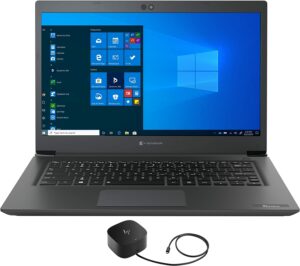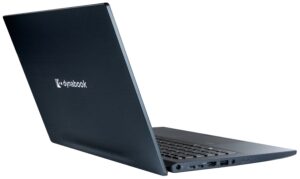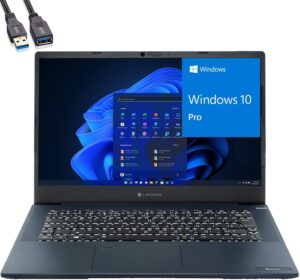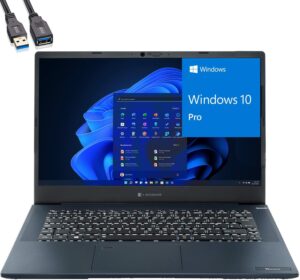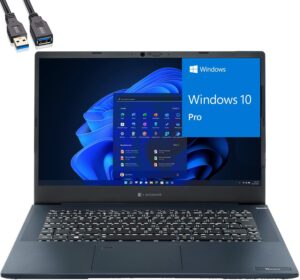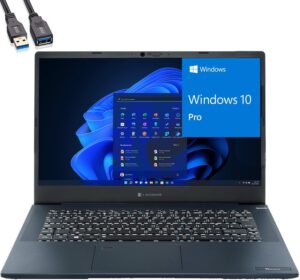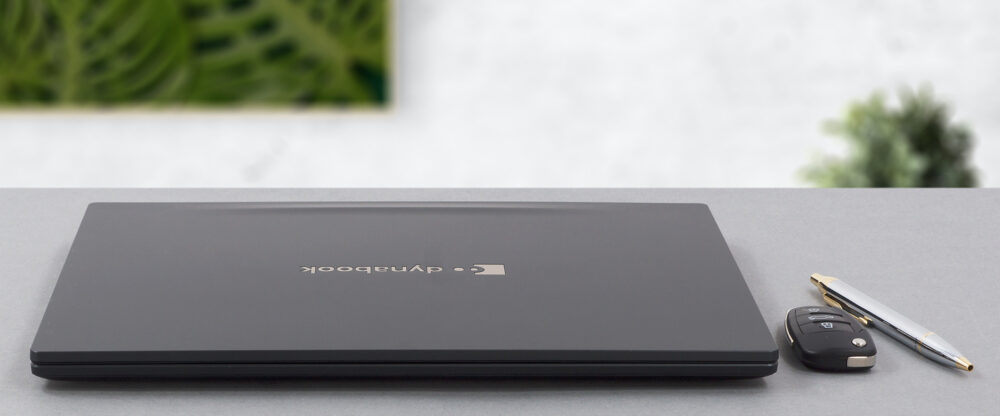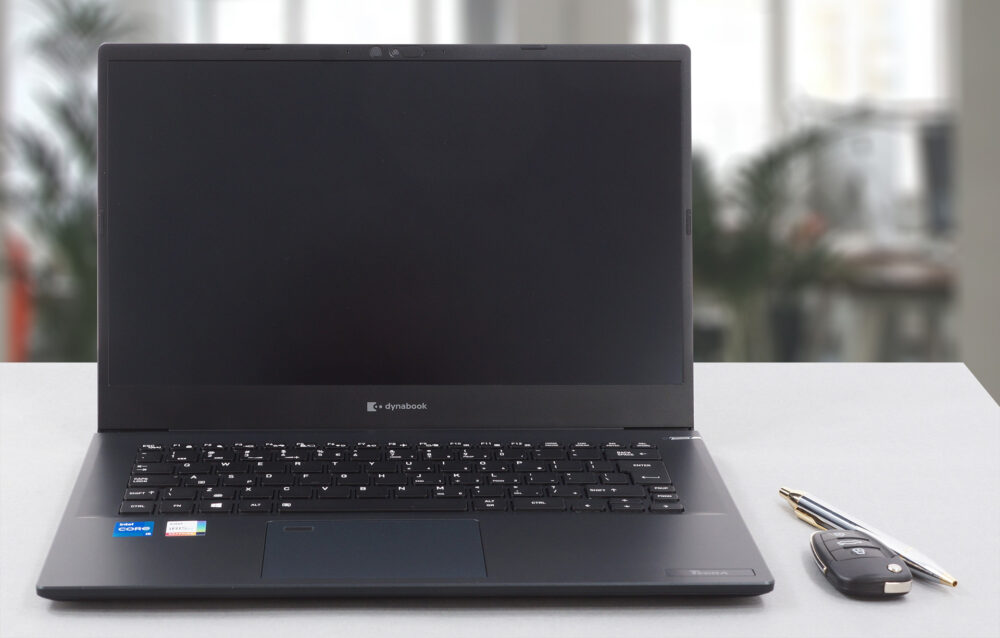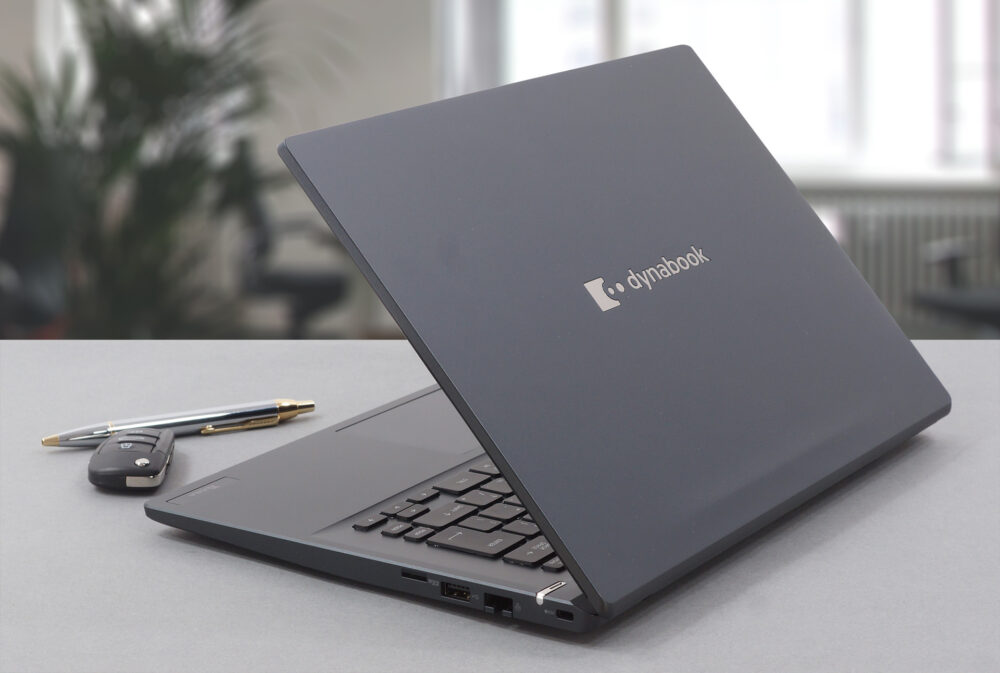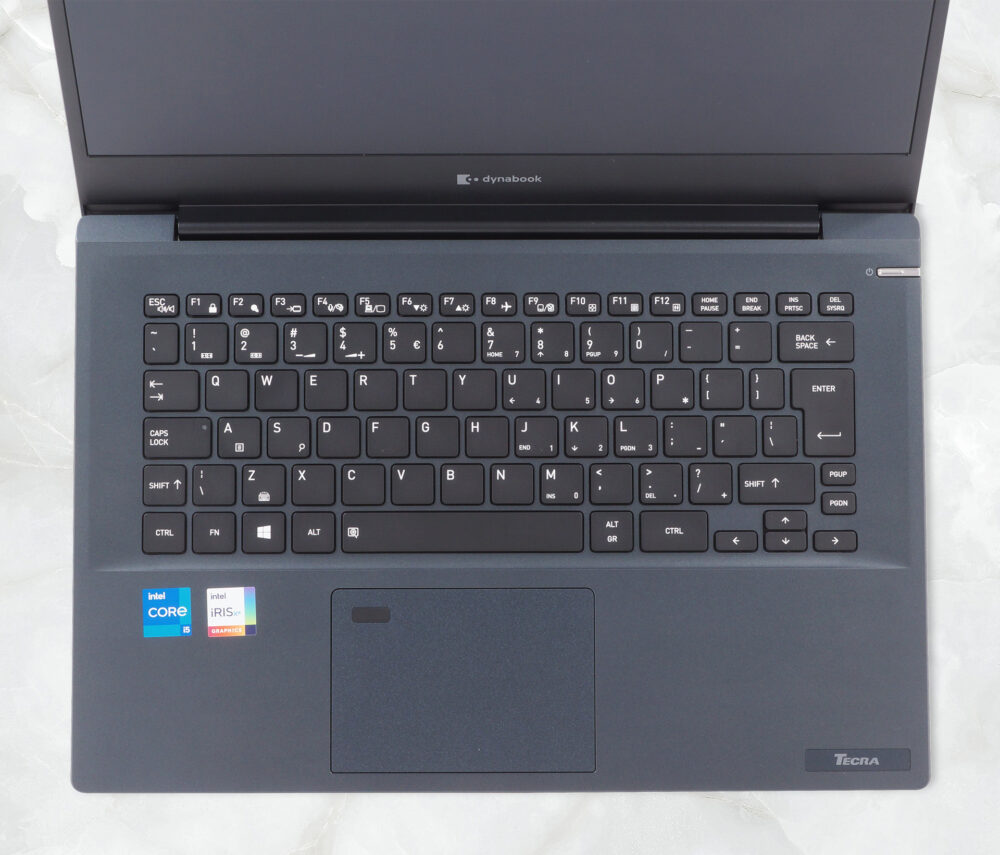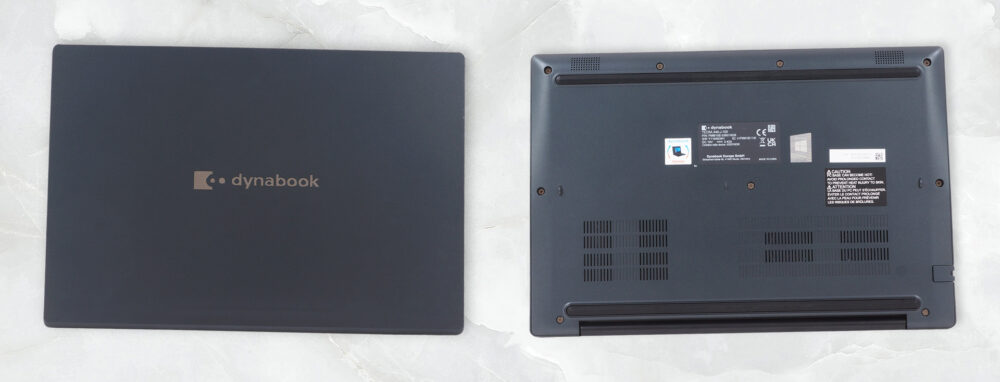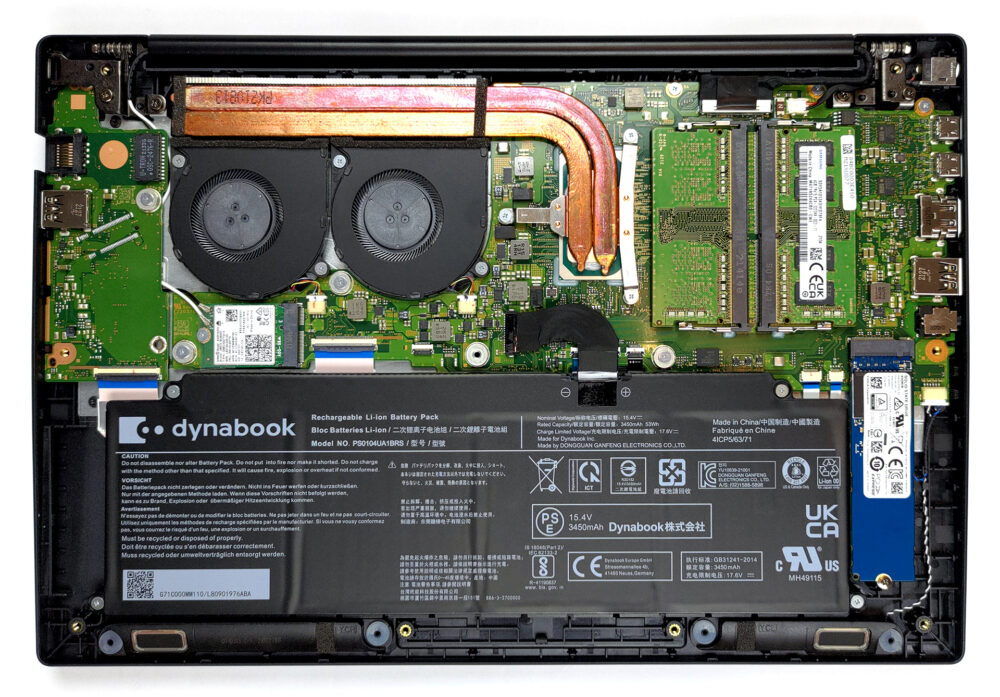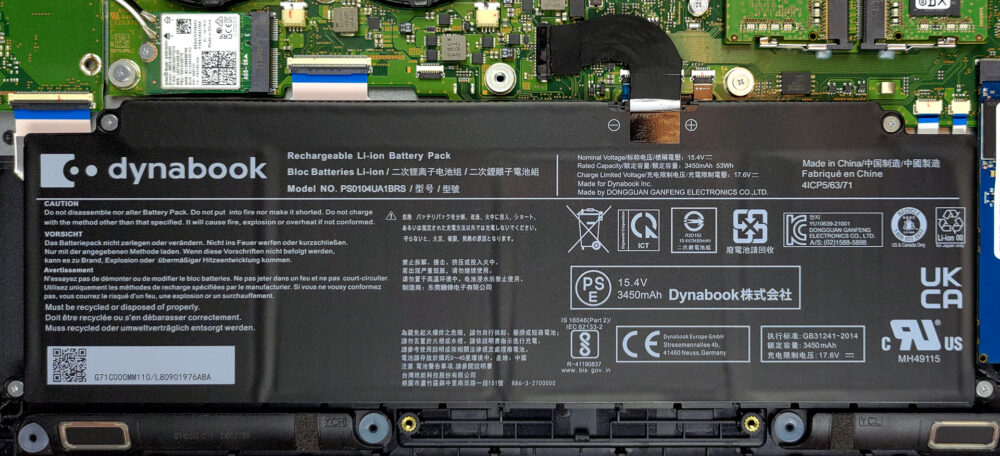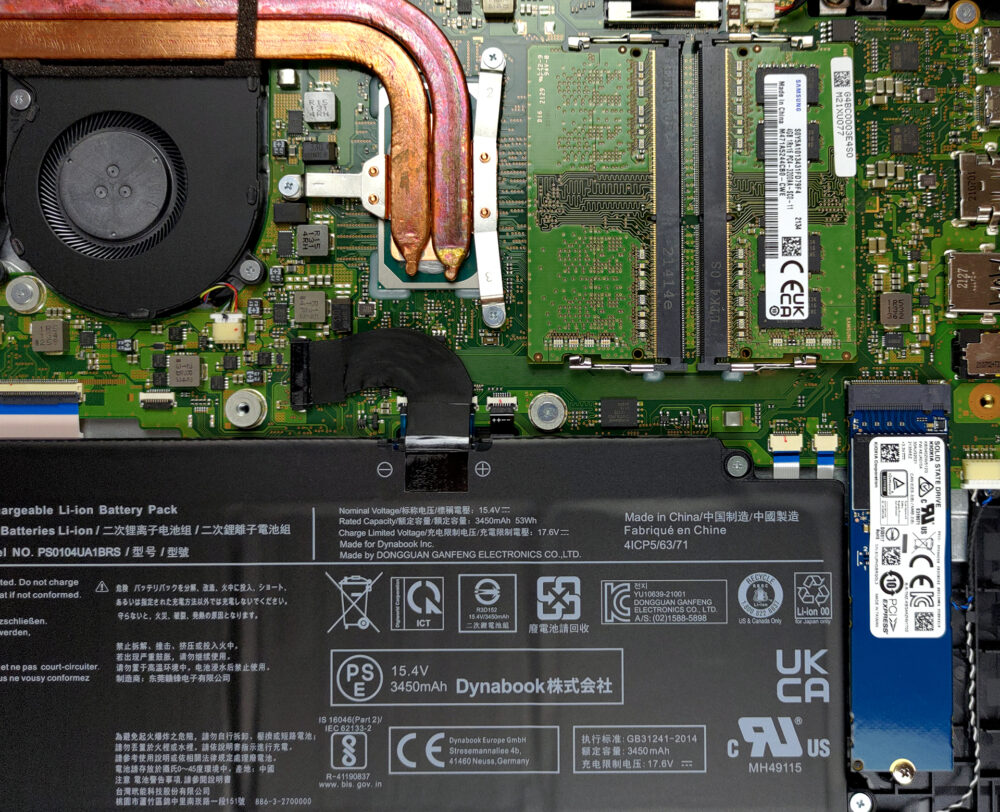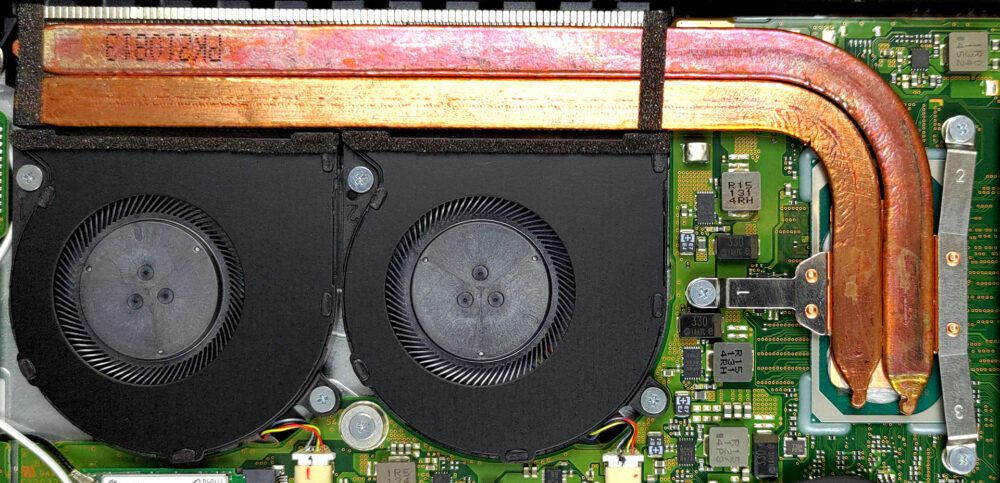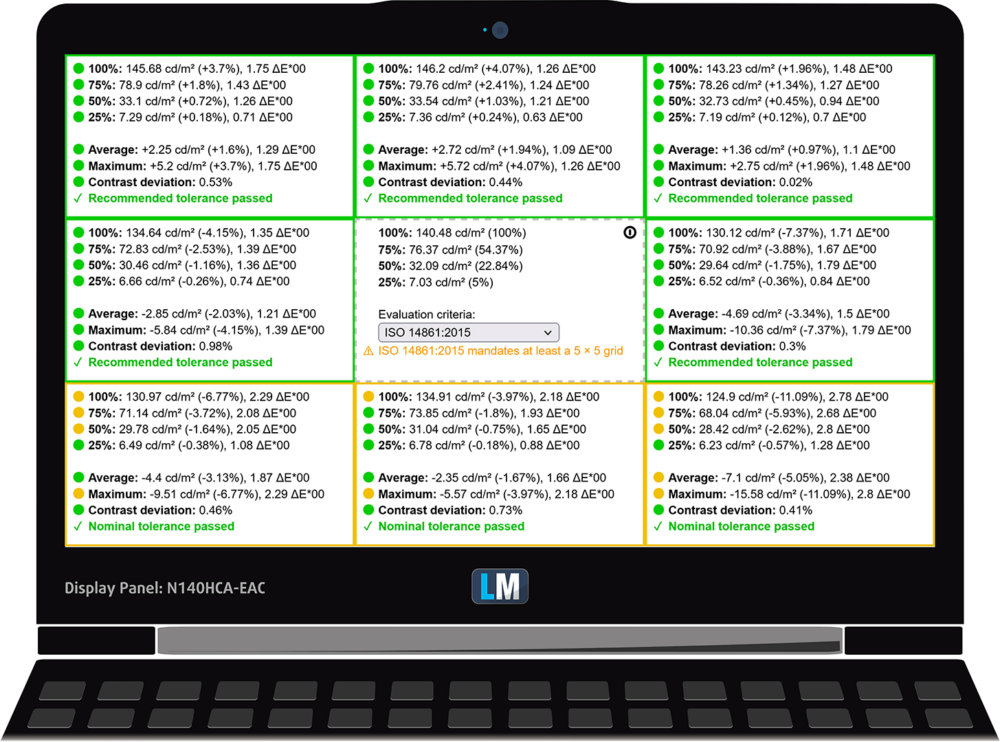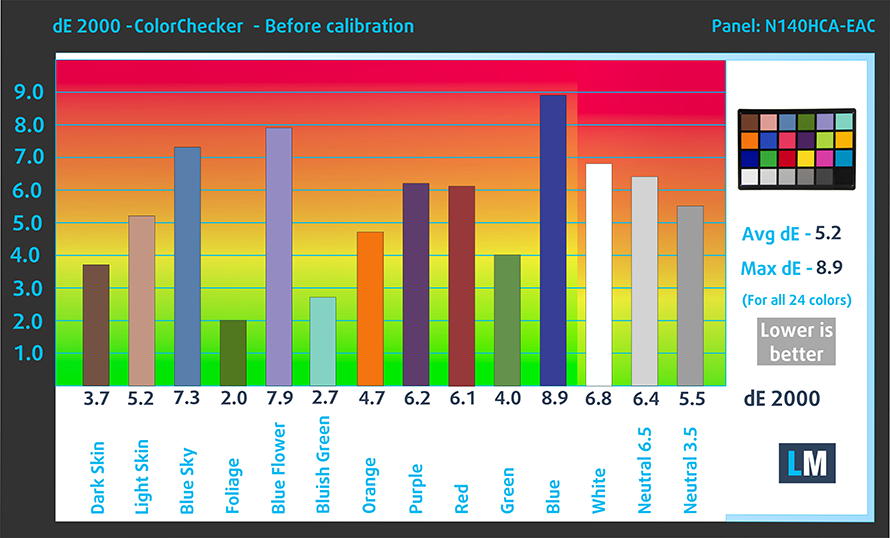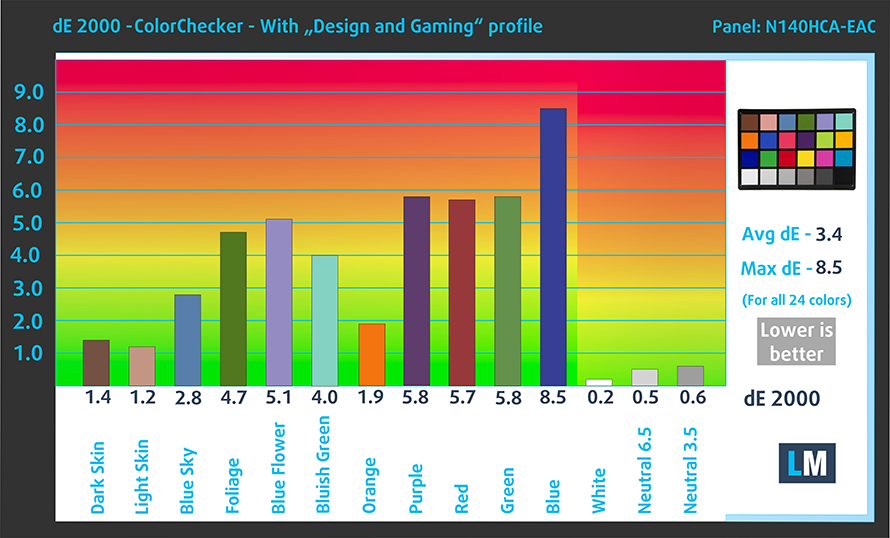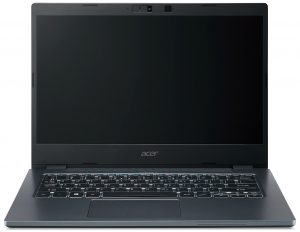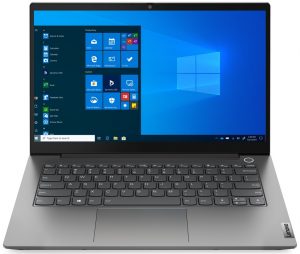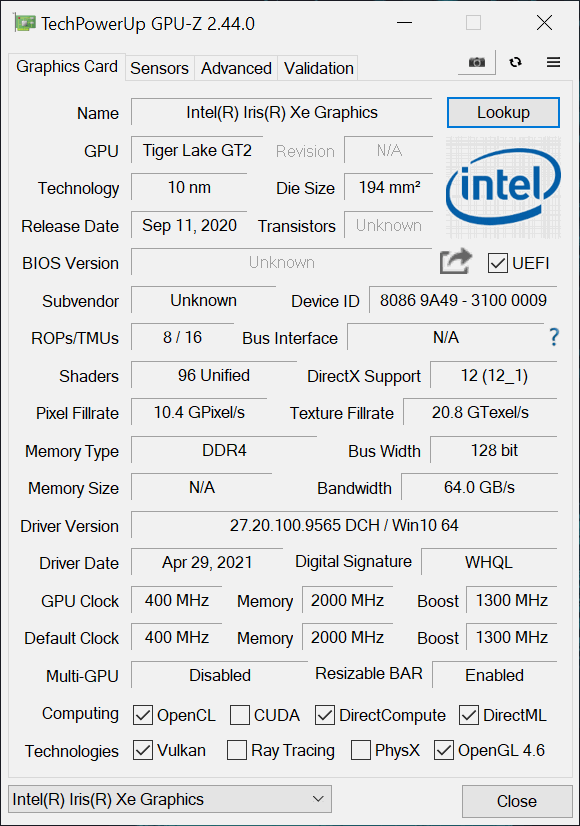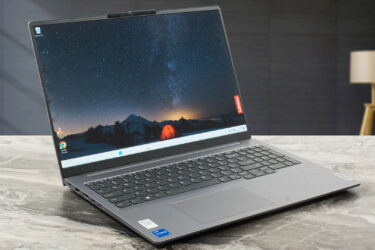Dynabook Tecra A40-J review – performance in the office and on the go
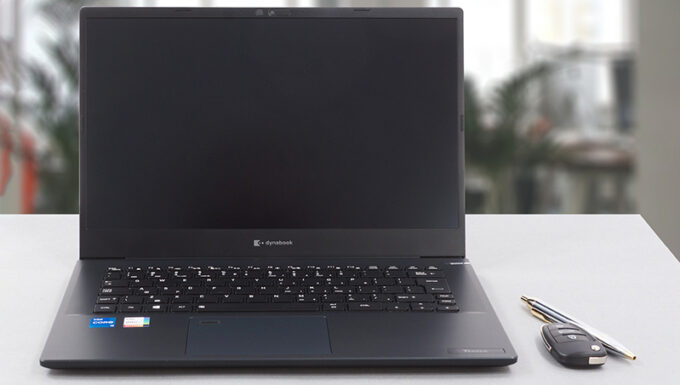 Dynabook, Toshiba, call it whatever you want, this brand specializes in business notebooks, and today’s device is no different. It is the Tecra A40-J, and it doesn’t look particularly outstanding on the outside.
Dynabook, Toshiba, call it whatever you want, this brand specializes in business notebooks, and today’s device is no different. It is the Tecra A40-J, and it doesn’t look particularly outstanding on the outside.
However, Dynabook states that their laptop is painted in an antimicrobial paint that, as the name suggests, inhibits the growth of bacteria on its surface. Additionally, it is compliant with the MIL-STD-810H durability tests.
When it comes to performance, you are covered by a Tiger Lake-U chip. Provided you are happy to invest more money, you can pair it with the Core i7-1165G7. It is a pretty capable processor, with an iGPU that bests even some dedicated solutions. Also, it’s good to see that the laptop comes with a 1080p IPS panel.
So let’s see what was Dynabook able to do with this device, and if it’s good enough to take on some of the more renounced notebooks out there.
You can check the prices and configurations in our Specs System: https://laptopmedia.com/series/dynabook-tecra-a40-j/
Contents
Specs Sheet
- HDD/SSD
- up to 2000GB SSD
- M.2 Slot
- 1x 2280 M.2 NVMe slot See photo
- RAM
- up to 64GB
- OS
- Windows 10 Pro, Windows 11 Pro
- Battery
- 53Wh, 4-cell
- Body material
- Plastic / Polycarbonate
- Dimensions
- 323.6 x 220.6 x 18.9 mm (12.74" x 8.69" x 0.74")
- Weight
- 1.45 kg (3.2 lbs)
- Ports and connectivity
- 1x USB Type-A
- 3.2 Gen 1 (5 Gbps)
- 1x USB Type-A
- 3.2 Gen 1 (5 Gbps), Sleep and Charge
- 2x USB Type-C
- Thunderbolt 4, Power Delivery (PD), DisplayPort
- HDMI
- 2.0
- Card reader
- MicroSD
- Ethernet LAN
- 10, 100, 1000 Mbit/s
- Wi-Fi
- 802.11ax
- Bluetooth
- 5.1
- Audio jack
- 3.5mm Combo Jack
- Features
- Fingerprint reader
- optional
- Web camera
- HD
- Backlit keyboard
- optional
- Microphone
- Dual Microphone
- Speakers
- Stereo Speakers with DTS Audio
- Optical drive
- Security Lock slot
All Dynabook Tecra A40-J configurations
What’s in the box?
Inside the package, we found the mandatory paperwork, a 65W power adapter, and the laptop itself.
Design and construction
In terms of design, there are some interesting details all around. First, the backside of the lid cover features a mild spoiler-like solution. As we mentioned, the paint is anti-bacterial, but the material below it is plastic all around the device. Although it has covered some durability standards, the Dynabook Tecra A40-J shows some flex both from the lid and the base. On the bright side, it weighs 1.45 kg, while the profile stands at 18.9mm.
Thankfully, the lid can be opened with a single hand. Once you do that, you will see thin side bezels around the matte display. The bottom bezel is super thick, while the top one is significantly less pronounced. Additionally, there you will find an HD Web camera with a privacy shutter above it. And to its left, there is a weird plastic cap, which in our opinion takes place of an optional IR face recognition sensor.
Next, let’s go to the base, where we’ll find a quite interesting solution for the power button. It is separated from the keyboard and has a silver color. It looks like it’s spilling away from its place, while the design is very reminiscent of something that could be seen on a Sony Ericsson phone in 2005.
As for the keyboard, it comes with a backlight, programmable to stay on or off at all times, or shut down after a timeout. Additionally, the key travel is pretty decent, while the feedback is clicky. This results in a generally comfortable typing experience.
Now, the touchpad is a bit small by 2022 standards, but it’s not too bad. In fact, we found its texture smooth, while the tracking is super responsive. However, there is one thing we didn’t like, and it was the way it handles the fingerprint reader. It is located in the top left part of the touchpad, and the area around it is non-touch sensitive.
If you turn the laptop upside down, you will see the two speaker cutouts, as well as a couple of ventilation grills. Naturally, the hot air is being exhausted from the back, with most of the air being aimed at the bottom part of the display.
Ports
On the left side, there is a power plug, two Thunderbolt 4 connectors, an HDMI connector, a USB Type-A 3.2 (Gen. 1) port, an audio jack, and a couple of indicator lights. Then, on the left, you get a security slot, a LAN port, a USB Type-A 3.2 (Gen. 1) port, and a MicroSD card slot.
Disassembly, upgrade options and maintenance
This laptop’s bottom panel is held in place by 9 Phillips-head screws. After you undo them, you have to pry the bottom panel with a plastic tool.
Inside, you will find a 53Wh battery. It lasted us for 10 hours of Web browsing, or 7 hours of video playback. If you want to take the battery out, you will need to undo four Phillips-head screws. Then, unplug the connector from the motherboard, and remove the unit from the motherboard.
It’s good to see there are two SODIMM slots for memory expansion. Additionally, there is one M.2 PCIe x4 slot for storage.
As for the cooling, there are two heat pipes connected to a rather long heat sink. Then, two fans blow the heat away from the device.
Display quality
Dynabook Tecra A40-J has a touchscreen Full HD IPS display, model number Chi Mei N140HCA-EAC (CNM14D4). Its diagonal is 14″ (35.56 cm), and the resolution – 1920 х 1080. Additionally, the screen ratio is 16:9, the pixel density – 157 ppi, their pitch – 0.161 x 0.161 mm. The screen can be considered Retina when viewed from at least 56 cm (from this distance, the average human eye can’t see the individual pixels).
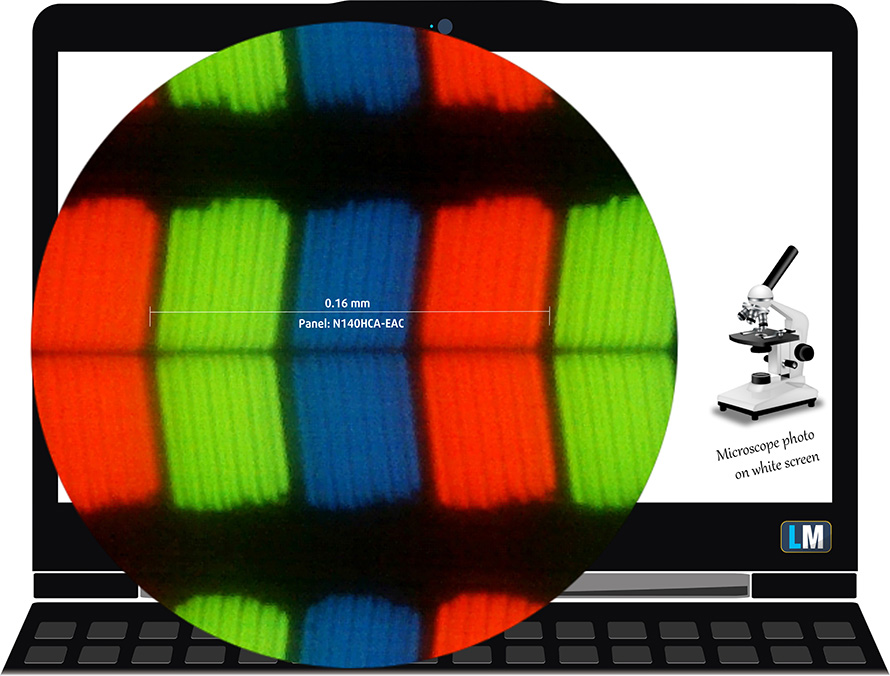
Its viewing angles are excellent. We have provided images at 45 degrees to evaluate quality.
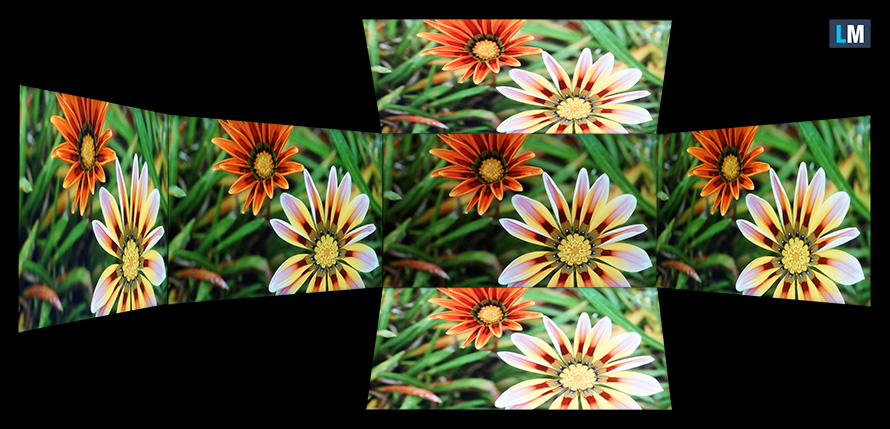
Also, a video with locked focus and exposure.
The maximum measured brightness is 264 nits (cd/m2) in the middle of the screen and 257 nits (cd/m2) average across the surface with a maximum deviation of 7%. The Correlated Color Temperature on a white screen and at maximum brightness is 6530K.
In the illustration below you can see how the display performs from a uniformity perspective. The illustration below shows how matters are for operational brightness levels (approximately 140 nits) – in this particular case at 52% Brightness (White level = 140 cd/m2, Black level = 0.1 cd/m2).
Values of dE2000 over 4.0 should not occur, and this parameter is one of the first you should check if you intend to use the laptop for color-sensitive work (a maximum tolerance of 2.0 ). The contrast ratio is very good – 1380:1.
To make sure we are on the same page, we would like to give you a little introduction to the sRGB color gamut and the Adobe RGB. To start, there’s the CIE 1976 Uniform Chromaticity Diagram that represents the visible specter of colors by the human eye, giving you a better perception of the color gamut coverage and the color accuracy.
Inside the black triangle, you will see the standard color gamut (sRGB) that is being used by millions of people on HDTV and on the web. As for the Adobe RGB, this is used in professional cameras, monitors, etc for printing. Colors inside the black triangle are used by everyone and this is an essential part of the color quality and color accuracy of a mainstream notebook.
Still, we’ve included other color spaces like the famous DCI-P3 standard used by movie studios, as well as the digital UHD Rec.2020 standard. Rec.2020, however, is still a thing of the future and it’s difficult for today’s displays to cover that well. We’ve also included the so-called Michael Pointer gamut, or Pointer’s gamut, which represents the colors that naturally occur around us every day.
The yellow dotted line shows Dynabook Tecra A40-J’s color gamut coverage.
Its display covers just 53% of the sRGB/ITU-R BT.709 (web/HDTV standard) in CIE1976.
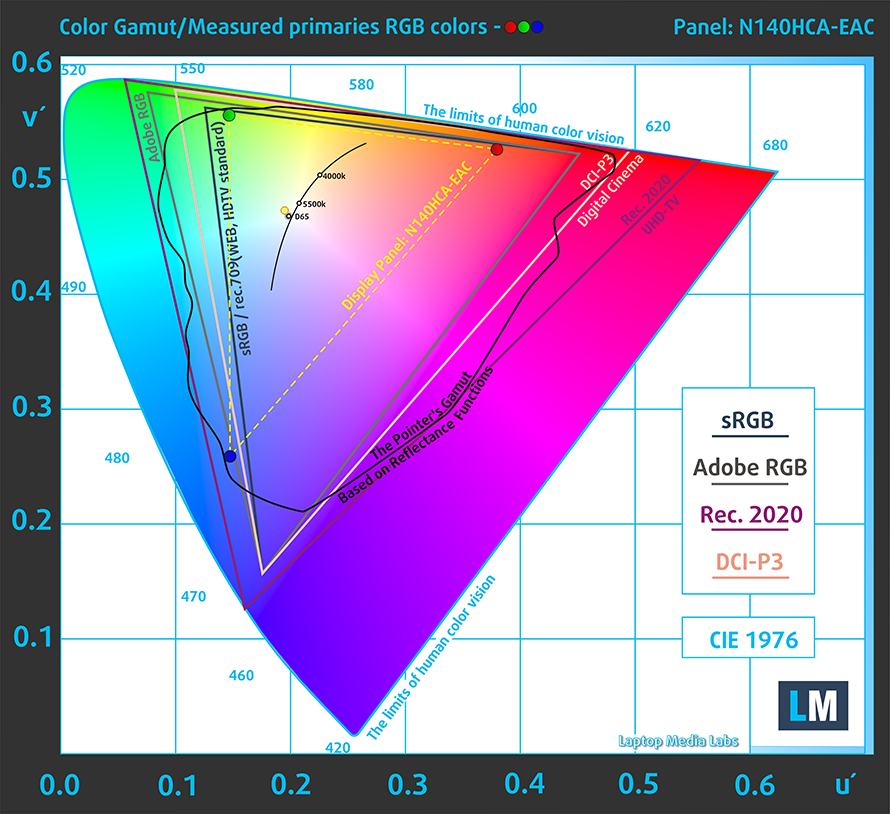
Our “Design and Gaming” profile delivers optimal color temperature (6500K) at 140 cd/m2 luminance and sRGB gamma mode.
We tested the accuracy of the display with 24 commonly used colors like light and dark human skin, blue sky, green grass, orange, etc. You can check out the results at factory condition and also, with the “Design and Gaming” profile.
Below you can compare the scores of Dynabook Tecra A40-J with the default settings (left), and with the “Gaming and Web design” profile (right).
The next figure shows how well the display can reproduce dark parts of an image, which is essential when watching movies or playing games in low ambient light.
The left side of the image represents the display with stock settings, while the right one is with the “Gaming and Web Design” profile activated. On the horizontal axis, you will find the grayscale, and on the vertical axis – the luminance of the display. On the two graphs below you can easily check for yourself how your display handles the darkest nuances but keep in mind that this also depends on the settings of your current display, the calibration, the viewing angle, and the surrounding light conditions.
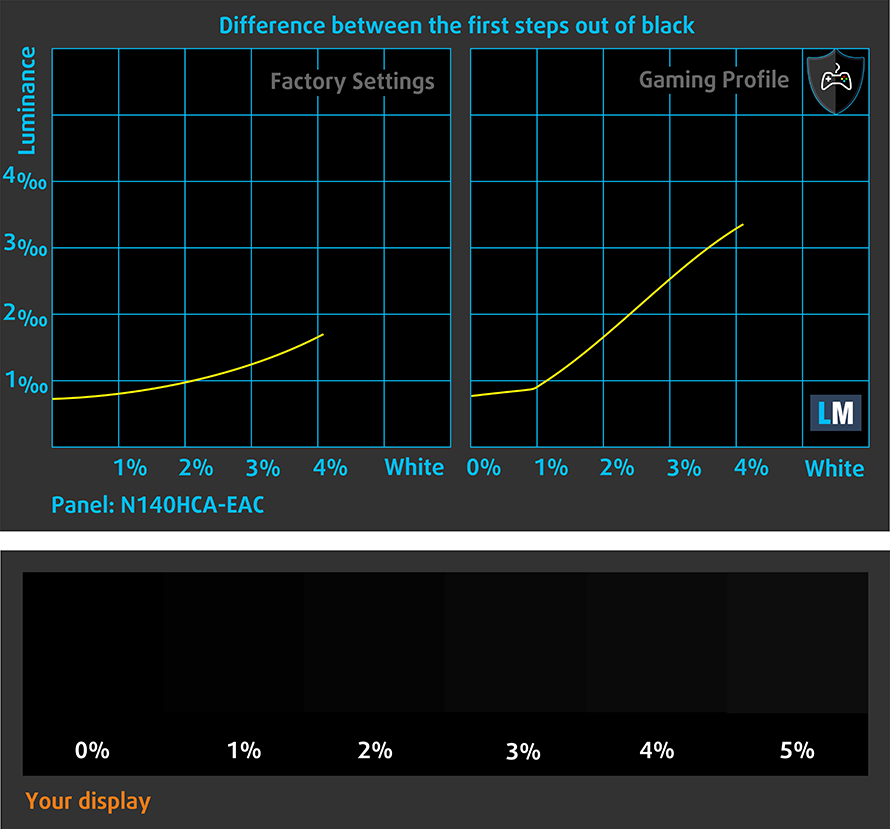
Response time (Gaming capabilities)
We test the reaction time of the pixels with the usual “black-to-white” and “white-to-black” method from 10% to 90% and vice versa.
We recorded Fall Time + Rise Time = 29 ms
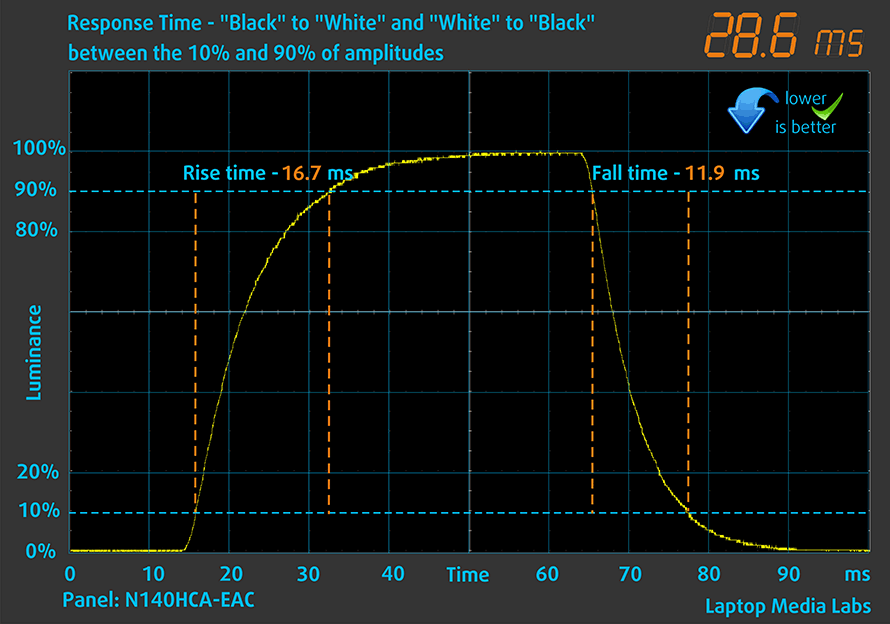
After that, we test the reaction time of the pixels with the usual “Gray-to-Gray” method from 50% White to 80% White and vice versa between 10% and 90% of the amplitude.
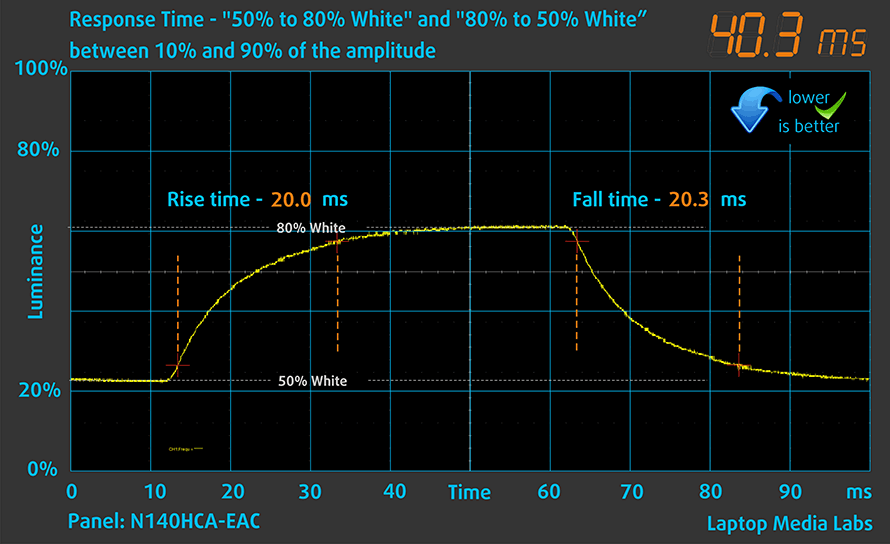
Health impact – PWM / Blue Light
PWM (Screen flickering)
Pulse-width modulation (PWM) is an easy way to control monitor brightness. When you lower the brightness, the light intensity of the backlight is not lowered, but instead turned off and on by the electronics with a frequency indistinguishable to the human eye. In these light impulses, the light/no-light time ratio varies, while brightness remains unchanged, which is harmful to your eyes. You can read more about that in our dedicated article on PWM.
Dynabook Tecra A40-J’s display is using PWM to adjust the brightness up to 65 nits. After that it’s flicker-free. Moreover, the PWM it uses has a very high frequency, making the display comfortable for long hours of work and safe for your eyes in this aspect.
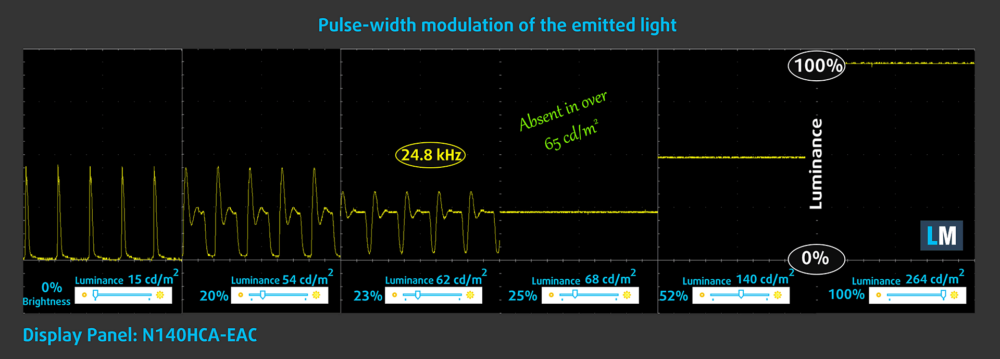
Blue light emissions
Installing our Health-Guard profile not only eliminates PWM but also reduces the harmful Blue Light emissions while keeping the colors of the screen perceptually accurate. If you’re not familiar with the Blue light, the TL;DR version is – emissions that negatively affect your eyes, skin, and your whole body. You can find more information about that in our dedicated article on Blue Light.
Buy our profiles
Since our profiles are tailored for each display model, this article and its respective profile package are meant for Dynabook Tecra A40-J configurations with 14.0″ Chi Mei N140HCA-EAC (CMN14D4) (FHD, 1920 × 1080) IPS panel.
*Should you have problems with downloading the purchased file, try using a different browser to open the link you’ll receive via e-mail. If the download target is a .php file instead of an archive, change the file extension to .zip or contact us at [email protected].
Read more about the profiles HERE.
In addition to receiving efficient and health-friendly profiles, by buying LaptopMedia's products you also support the development of our labs, where we test devices in order to produce the most objective reviews possible.

Office Work
Office Work should be used mostly by users who spend most of the time looking at pieces of text, tables or just surfing. This profile aims to deliver better distinctness and clarity by keeping a flat gamma curve (2.20), native color temperature and perceptually accurate colors.

Design and Gaming
This profile is aimed at designers who work with colors professionally, and for games and movies as well. Design and Gaming takes display panels to their limits, making them as accurate as possible in the sRGB IEC61966-2-1 standard for Web and HDTV, at white point D65.

Health-Guard
Health-Guard eliminates the harmful Pulse-Width Modulation (PWM) and reduces the negative Blue Light which affects our eyes and body. Since it’s custom tailored for every panel, it manages to keep the colors perceptually accurate. Health-Guard simulates paper so the pressure on the eyes is greatly reduced.
Get all 3 profiles with 33% discount
Sound
Dynabook Tecra A40-J’s speakers produce a sound of not very good quality. There are deviations across the entire frequency spectrum. Moreover, the highs are greatly overexposed, while the mids are pretty muffled. With that said, the bass is almost nonexistent.
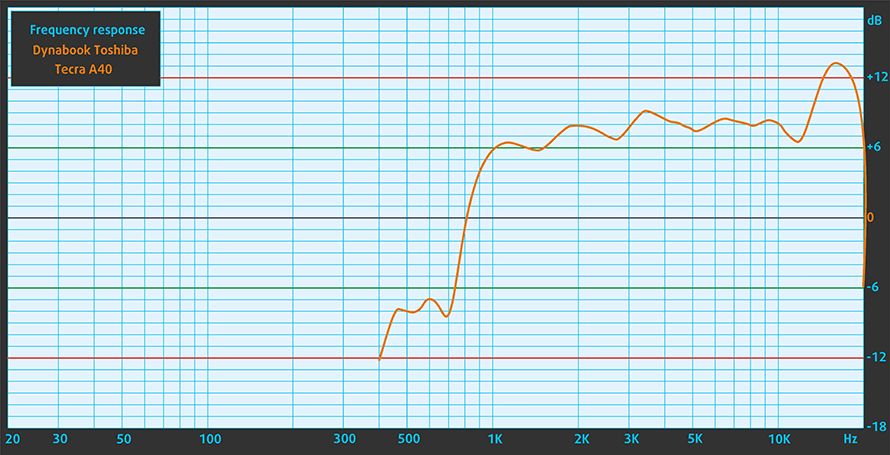
Drivers
All drivers and utilities for this notebook can be found here: https://support.dynabook.com/support/driversOSResults?freeText=1200018383
Battery
Now, we conduct the battery tests with Windows Better performance setting turned on, screen brightness adjusted to 120 nits, and all other programs turned off except for the one we are testing the notebook with. This laptop’s 53Wh battery pack lasted us for 10 hours and 10 minutes of Web browsing, or 7 hours of video playback.
In order to simulate real-life conditions, we used our own script for automatic web browsing through over 70 websites.
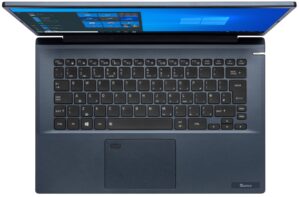
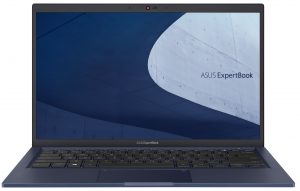
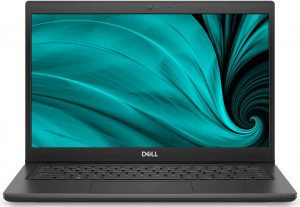
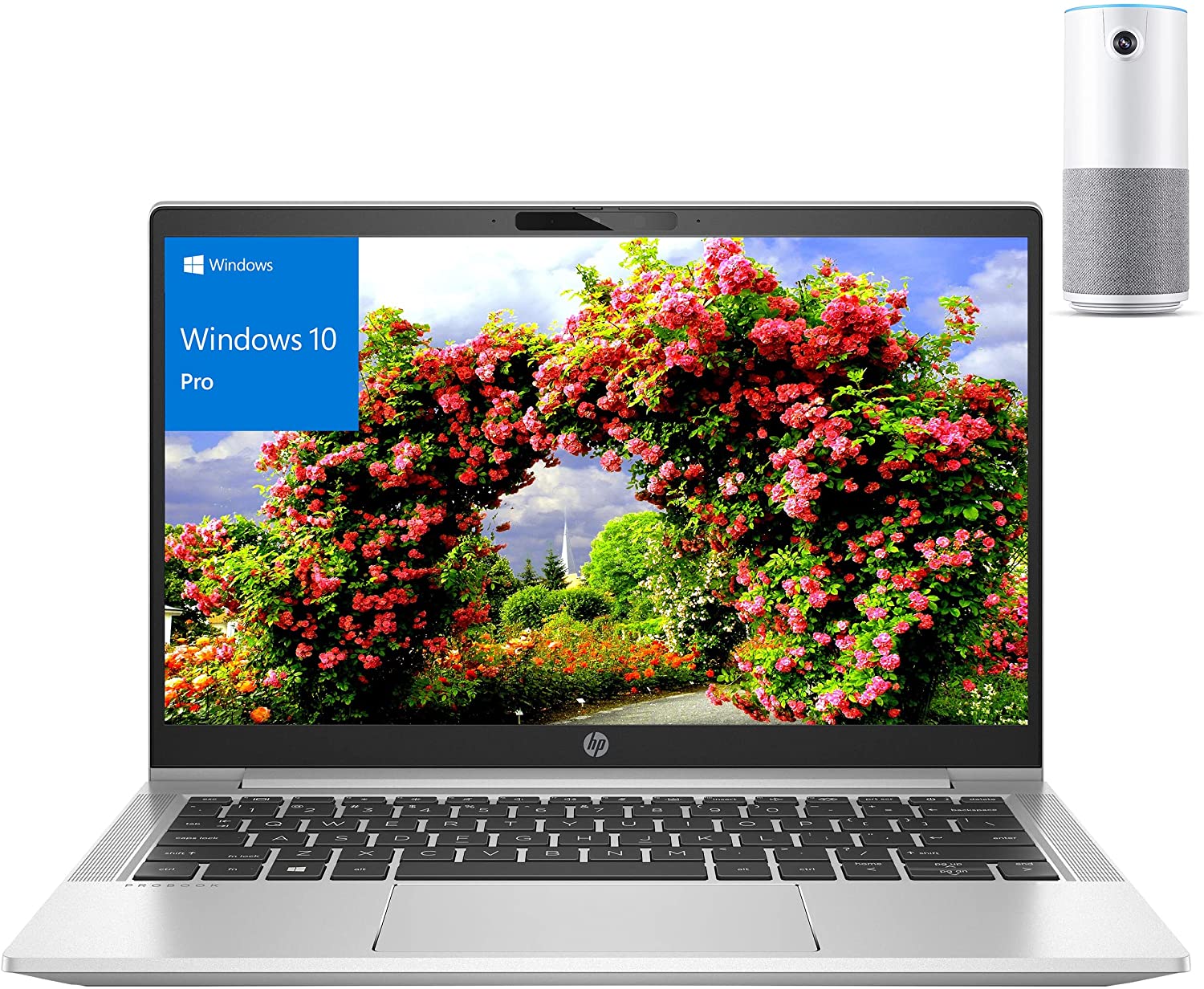
For every test like this, we use the same video in HD.




CPU options
Currently, we were able to find the laptop with the Core i3-1115G4, Core i5-1135G7, or Core i7-1165G7.
Results are from the Cinebench R23 CPU test (the higher the score, the better)
Results are from our Photoshop benchmark test (the lower the score, the better)
GPU options
And for graphics, the only option at this time is the integrated Iris Xe Graphics G4 or G7.
Results are from the 3DMark: Time Spy (Graphics) benchmark (higher the score, the better)
Results are from the 3DMark: Fire Strike (Graphics) benchmark (higher the score, the better)
Results are from the 3DMark: Wild Life benchmark (higher the score, the better)
Results are from the Unigine Superposition benchmark (higher the score, the better)
Gaming tests

| CS:GO | HD 1080p, Low (Check settings) | HD 1080p, Medium (Check settings) | HD 1080p, MAX (Check settings) |
|---|---|---|---|
| Average FPS | 100 fps | 74 fps | 34 fps |

| DOTA 2 | HD 1080p, Low (Check settings) | HD 1080p, Normal (Check settings) | HD 1080p, High (Check settings) |
|---|---|---|---|
| Average FPS | 105 fps | 65 fps | 38 fps |
Temperatures and comfort
Max CPU load
In this test we use 100% on the CPU cores, monitoring their frequencies and chip temperature. The first column shows a computer’s reaction to a short load (2-10 seconds), the second column simulates a serious task (between 15 and 30 seconds), and the third column is a good indicator of how good the laptop is for long loads such as video rendering.
Average core frequency (base frequency + X); CPU temp.
| Intel Core i5-1135G7 (15W TDP) | 0:02 – 0:10 sec | 0:15 – 0:30 sec | 10:00 – 15:00 min |
|---|---|---|---|
| Dynabook Tecra A40-J | 3.74 GHz (B+56%) @ 96°C @ 51W | 3.21 GHz (B+34%) @ 86°C @ 36W | 2.91 GHz (B+21%) @ 77°C @ 28W |
| HP ProBook 430 G8 | 3.32 GHz (B+38%) @ 97°C @ 35W | 2.74 GHz (B+14%) @ 89°C @ 24W | 2.29 GHz (B-5%) @ 75°C @ 17W |
| Acer Swift 3 (SF314-511) | 3.15 GHz (B+31%) @ 91°C @ 34W | 2.89 GHz (B+20%) @ 91°C @ 28W | 2.69 GHz (B+12%) @ 91°C @ 25W |
| Microsoft Surface Laptop 4 (13.5) | 3.80 GHz (B+58%) @ 80°C @ 46W | 3.62 GHz (B+51%) @ 89°C @ 43W | 1.99 GHz (B-17%) @ 60°C @ 13W |
| ASUS VivoBook 15 OLED K513 | 3.39 GHz (B+41%) @ 83°C @ 40W | 3.28 GHz (B+34%) @ 91°C @ 37W | 2.96 GHz (B+23%) @ 85°C @ 28W |
| MSI Summit E13 Flip Evo | 3.65 GHz (B+52%) @ 96°C @ 45W | 3.31 GHz (B+38%) @ 96°C @ 47W | 3.03 GHz (B+25%) @ 96°C @ 29W |
| Dell XPS 13 9310 (2-in-1) | 3.36 GHz (B+40%) @ 99°C @ 41W | 3.16 GHz (B+32%) @ 99°C @ 37W | 1.92 GHz @ 72°C @ 16W |
| Dell XPS 13 9310 | 3.15 GHz (B+31%) @ 100°C @ 40W | 2.73 GHz (B+14%) @ 100°C @ 30W | 1.65 GHz @ 73°C @ 15W |
| Dell Vostro 14 5402 | 3.02 GHz (B+26%) @ 99°C @ 29W | 2.61 GHz (B+9%) @ 99°C @ 25W | 2.00 GHz @ 76°C @ 15W |
| MSI Modern 15 (A11X) | 3.59 GHz (B+50%) @ 94°C @ 44W | 3.45 GHz (B+44%) @ 95°C @ 40W | 3.18 GHz (B+33%) @ 91°C @ 34W |
| Lenovo ThinkBook 14s Yoga | 3.52 GHz (B+47%) @ 94°C | 3.24 GHz (B+35%) @ 94°C | 2.63 GHz (B+10%) @ 75°C |
| Lenovo Yoga 7 (14) | 3.34 GHz (B+39%) @ 94°C | 2.97 GHz (B+24%) @ 94°C | 2.39 GHz @ 75°C |
| Acer Aspire 5 (A514-54) | 3.54 GHz (B+48%) @ 87°C | 2.01 GHz @ 66°C | 2.03 GHz @ 67°C |
The Dynabook Tecra A40-J performs really well for a 14-inch laptop. Its dual-heat pipe cooling solution does a good job of maintaining the temperatures of the core, with the CPU finishing the stress test at 77°C at 2.91 GHz while fulfilling its 28W power limit.
Comfort during full load
At the same time, the laptop wasn’t too loud, and the surface temperature was not exceeding 40°C.
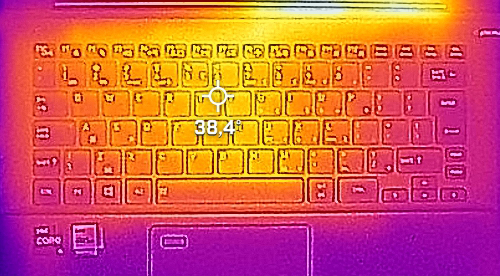
Verdict
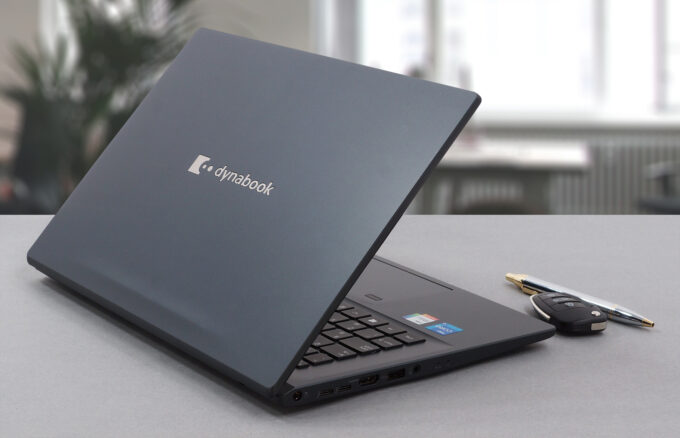 Surprisingly or not, Dynabook has built a really solid machine, especially when it comes to performance. And it has the cooling to back the processors up. In our opinion, they could have easily gone for the 35W Tiger Lake-H35 devices, or even AMD’s Zen 3 5000U processors.
Surprisingly or not, Dynabook has built a really solid machine, especially when it comes to performance. And it has the cooling to back the processors up. In our opinion, they could have easily gone for the 35W Tiger Lake-H35 devices, or even AMD’s Zen 3 5000U processors.
Let’s not talk about what, if, and maybes, because there is no way to change the present. A thing we wouldn’t even want to change would be the port selection – both in and out. First, let’s talk about the slots on the inside – two SODIMMs for memory, and one M.2 PCIe x4 slot for storage expansion. On point!
How about what’s going on on the outside? Well, two Thunderbolt 4 connectors, two regular-size USB ports, an HDMI connector, a LAN port, a MicroSD card reader, and an audio jack. Well, that’s pretty much all you need.
Dynabook Tecra A40-J’s IPS panel (Chi Mei N140HCA-EAC (CNM14D4)) has a Full HD resolution, comfortable viewing angles, and high contrast ratio. Thankfully, it doesn’t use aggressive PWM for brightness adjustment. On the other hand, the color coverage is very low, which makes the image appear a bit dull.
You also get a good amount of features packed into this device. This includes a fingerprint reader and a privacy shutter. Also, the keyboard and touchpad feel really comfortable for use.
Unfortunately, the fingerprint reader is located inside the touchpad area. And the space above it and to its left is practically non-sensitive to touches, which is petty. However, what is even worse is the fact that the speakers here are no good. The mids are super muffled, while the lows are almost muted. Clearly, you won’t be satisfied, even if you’re not an audiophile.
When it comes to the battery life, the laptop will last you about 10 hours of Web browsing, or 7 hours of video playback. This means it should last you a light workday on battery power, but if you throw anything heavier at it – bring a charger.
At the end of the day, this business device brings a lot to the table. We think it has what it takes to battle the likes of the Dell Latitude 14 3420, or the Lenovo ThinkPad E14 Gen 2.
You can check the prices and configurations in our Specs System: https://laptopmedia.com/series/dynabook-tecra-a40-j/
Pros
- Capable cooling and decent performance
- Privacy shutter + Fingerprint reader
- 2x Thunderbolt 4 + MicroSD card reader
- No aggressive PWM (Chi Mei N140HCA-EAC (CNM14D4))
- Abundance of ports
- Decent upgrade options
Cons
- Unsatisfactory speakers
- 53% of sRGB coverage (Chi Mei N140HCA-EAC (CNM14D4))
